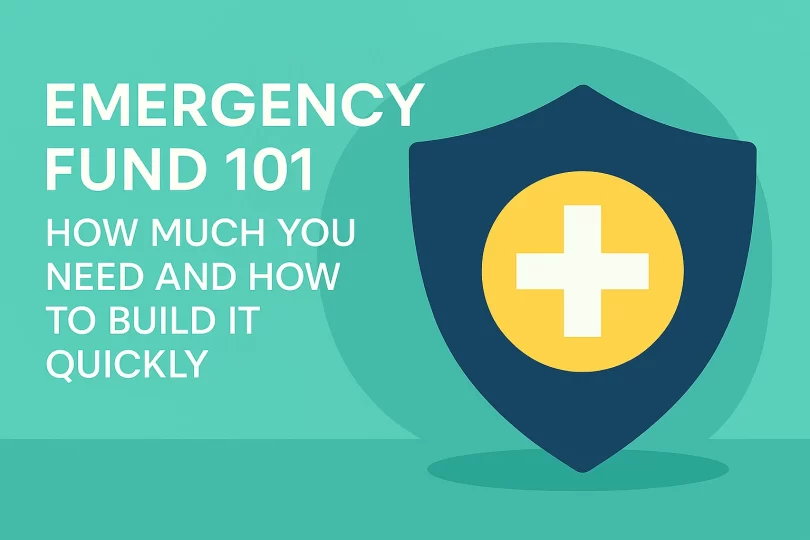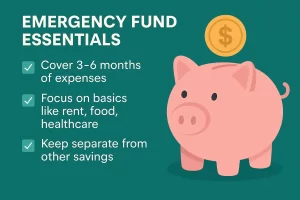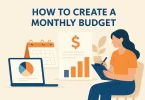Why an Emergency Fund Is Essential
Life is unpredictable. Whether it’s an unexpected medical bill, sudden car repairs, or job loss, financial emergencies can strike without warning. According to a global report by Statista, over 45% of adults worldwide would struggle to cover an unexpected $500 expense without borrowing money. An emergency fund acts as a personal financial safety net, reducing stress and protecting your long-term financial goals.
Building an emergency fund, even when living paycheck-to-paycheck, is possible with the right strategies and mindset.
Why Many People Struggle to Save for Emergencies
- Underestimating small expenses: Daily coffee runs, impulse buys, and subscriptions quickly drain potential savings.
- Lack of structured savings habit: Without a system, saving feels random and inconsistent.
- Prioritizing non-essentials: Lifestyle inflation often outpaces income increases.
- Fear of sacrificing lifestyle: People assume saving means deprivation, which isn’t true with the right approach.
Step-by-Step Guide to Building Your Emergency Fund
1. Set a Clear, Achievable Goal
Instead of aiming for an overwhelming “6 months of expenses” right away, start smaller.
- Initial Target: $1,000 emergency buffer
- Long-Term Target: 3–6 months of essential living expenses
2. Open a Separate Savings Account
Keep your emergency fund out of your daily spending accounts. A high-yield savings account is ideal — it keeps your money accessible but not “too easy” to dip into.
(Compare the best high-interest savings accounts here.)
3. Automate Your Savings
Set up an automatic transfer from your checking account to your emergency fund right after each paycheck arrives. Even $20–$50 per week adds up faster than you think!
4. Start with Small Wins
Every bit counts. Save cash-back rewards, spare change, small bonuses, refunds, or any “extra” money you receive directly into your emergency fund.
Learn the power of “small consistent wins” in our smart saving strategies article.
5. Cut, Swap, and Pause (Temporarily)
Identify easy temporary cutbacks:
- Pause unused subscriptions
- Swap expensive outings for free activities
- Cook at home instead of ordering takeout
Use those savings toward your emergency fund.
6. Boost Savings with Short-Term Side Hustles
Freelancing, pet sitting, tutoring, delivery gigs — even short side projects can dramatically speed up your savings.
7. Track Progress Weekly
Tracking keeps you motivated.
Use a basic savings tracker, journal, or app to celebrate milestones like every $100 saved.
Practical Example: Save $1,000 in 90 Days
Saving $1,000 in three months is doable. Here’s a breakdown of realistic strategies:
- Cut Unnecessary Subscriptions: Cancel services you don’t use regularly. Save about $35–$50 monthly.
- Automate $100 Transfers Monthly: Transfer money automatically into a separate savings account.
- Cook at Home: Meal prep 2–3 extra times per week. Save about $100–$150 monthly.
- Limit Impulse Buying: Apply the 24-hour rule. Save about $75–100 over 90 days.
Estimated Total Saved: $850–$1,050 in just 3 months.
Mistakes to Avoid When Building an Emergency Fund
- Setting Unrealistic Goals: Start small. Win early.
- Using It for Non-Emergencies: Only use this fund for genuine emergencies.
- Mixing Funds: Keep your emergency savings account separate from checking or spending accounts.
- Stopping After Reaching $1,000: Aim next for 3–6 months’ worth of essential expenses.
Small Actions Create Big Financial Security
Your first $500 or $1,000 emergency buffer might seem small, but it’s a powerful psychological and financial milestone. Building an emergency fund strengthens your resilience and confidence to face unexpected challenges without falling into debt.









